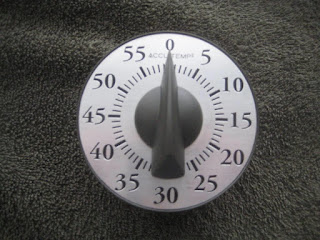This year I am packing enough grub for four months. All grocery supplies are off-the-shelf items.
I drink hot water alone with supper, and cold or hot water for other meals. Water is sterilized by boiling for one minute or by a filtration system. The latter removes bacteria and parasites (but not viruses, so is technically not sterilized).
Premier Protein® bars used in previous years no longer seem to be available in Canada and cannot be shipped from USA. There are other protein bars with at least 20g of protein that contain a lot of chocolate to which I have sadly become intolerant (along with coffee, tea and booze). There are also other good protein bars with 20g of protein that I have tested but cannot buy large quantities in Canada. I was able to buy the protein bars used in the following menu this year online: Costco® Canada for the SmartforLife® Cinnamon Pecan Protein Bar and Amazon.ca for the two Pure Protein® bars Strawberry Greek Yogurt and Birthday Cake. Because they are tastier, if available in Canada I will use such bars in the future instead of the Premier Protein® brand.
Average daily nutritional intake based on this 2020 menu:
3913 calories, 386g total carbohydrates, 48g fibre, 181g total fat, 185g protein
Average daily nutritional intake based on this 2020 menu:
3913 calories, 386g total carbohydrates, 48g fibre, 181g total fat, 185g protein
Breakfast - 7 days:
Dare RealMint™ scotch mint
Pure Protein® Strawberry Greek Yogurt Bar 50g (20g protein)
SmartforLife® Cinnamon Pecan Protein Bar 50g (20g protein)
seed mixture 1/4c (hemp hulled, chia, buckwheat toasted, pumpkin hulled roasted salted)
peanut butter smooth 1tbsp
vitamins
Breakfast - 4 days:
Dare RealMint™ scotch mint
1/2 hot cinnamon bannock (See below.)
grated Parmesan cheese 1/4c
real bacon crumbled 1/4c
vitamins
Breakfast - 3 days:
Dare RealMint™ scotch mint
1/2 hot cinnamon bannock
seed mixture 1/4c
peanut butter smooth 1tbsp
vitamins
Lunch - 7 days:
Dare RealMint™ scotch mint
1/4 cold cinnamon bannock
almonds roasted salted 1/4c
Mini Babybel™ cheese 20g (stores well in its wax cover unrefrigerated if wrapped to protect from damage)
Pure Protein® Strawberry Greek Yogurt Bar 50g (20g protein)
SmartforLife® Cinnamon Pecan Protein Bar 50g (20g protein)
Excel® (Eclipse® in USA) sugar-free gum Spearmint flavour
Lunch - 7 days:
Dare Real Mint™ scotch mint
1/4 cold cinnamon bannock
almonds roasted salted 1/4c
Mini Babybel™ cheese 20g
Excel® (Eclipse® in USA) sugar-free gum Spearmint flavour
Supper - daily:
Dare Real Mint™ scotch mint
grated Parmesan cheese 1/4c (most dishes, as required)
Pure Protein® Birthday Cake Bar 50g (20g protein)
fresh salad 3c (fireweed, or alder or birch leaves/catkins) (with Club House® Salad Herbs 1/2tsp)
fresh fruit if available 1/2c
(lingonberries, bunchberries, blueberries, red currants, raspberries, highbush cranberries, cloudberries, rose hips, Saskatoon berries, pin cherries, crowberries, bilberries)
Supper - 10 days:
sugar 1tbsp (as required, eg, for refried fish)
macaroni and real cheese 2c (Kraft™ Deluxe Four Cheese or Original Cheddar 400g)
OR both of the following
potato flakes 1c, or bulgur, whole wheat couscous or orzo 3/4c (plus nutritional yeast 1tbsp, chicken soup mix 1tbsp, and butter 2tbsp)
Freybe Naturally™ Pepperoni Original "no refrigeration required" 2x45g sticks
Supper - 4 days:
lemon pepper seasoning 1tsp (as required for refried fish, mushrooms, chowder)
stuffing mix 120g with butter 2tbsp, or oriental noodles 170g
PLUS one of the following
fish coated (cornmeal 1/8c, Montreal steak spice 1tbsp), fried in Crisco™ shortening (1/2lb saved and used over a period of two weeks)
OR
fish chowder (fish diced, boiled in double the usual amount water before adding above potato flakes ingredients plus 1tsp lemon pepper and 1/4c Parmesan cheese)
OR
small game (roasted over coals, or meat sliced and sauteed in shortening 1tbsp)
Cinnamon bannock:
3c premixed before the trip (whole wheat flour 1c, Purity® cornmeal 1/4c, quick rolled oats 1/4c, whole wheat couscous 1/4c, skim milk powder 1/4c, dark toasted wheat germ 2tbsp, white wheat bran 2tbsp, baking powder 2tsp, salt 1/2tsp, sugar 1tsp, Crisco™ shortening 6tbsp)
Add about 1/2c cold potable water to make soft dough.
Add about 1/2c cold potable water to make soft dough.
The dough is split into two layers, between which is added raisins 1/4c, cinnamon 1tbsp, brown sugar 1/4c, butter 3oz (3/8c). A large tart is formed and then baked in Dutch oven.
NOTE:
Compared to the bannock recipes prior to 2019, my new recipe using whole wheat flour and extra shortening, is more difficult to make and tends to be crumbly. I have found that with practice the proper technique mostly solves the problem. When flattening the mixed dough for each half layer, sprinkle a thin layer of cornmeal in the mixing pan first. Also sprinkle a thin layer of cornmeal on the top of each halved ball of dough before flattening so the dough will not stick to fingers. After setting aside the first flattened layer folded in half, when placing in position opened, press the two halves together to seal the "crack" created by folding. When flattening the bottom layer, leave as is in the pan without picking up. Otherwise the procedure is as depicted in
http://wildernessfellow.blogspot.com/2017/11/cinnamon-bannock-preparation.html
Refried pike recipe:
Sautee previously fried pike in 2tbsp butter, turning to coat both sides. Break up the fish into small pieces. Add a mixture of 1/4c Parmesan cheese, 1tbsp sugar, 1tsp lemon pepper, half the mixture sprinkled on one side before turning. Add the other half before turning again. Next add 3/4c wholewheat couscous, orzo or bulgur (cooked in 1-1/4c boiling water with added 1tbsp nutritional yeast, 1tbsp chicken soup base), mixing with the fish to soak up the butter.























































